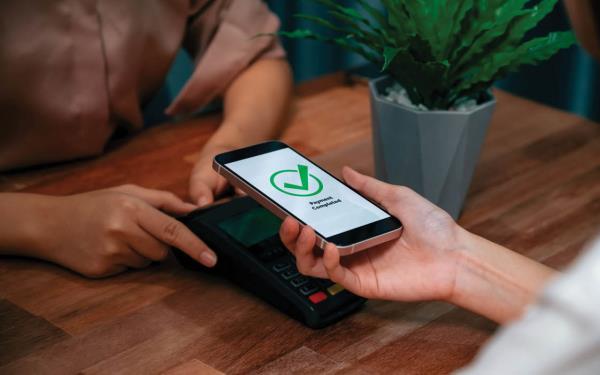06 November 2023

Mobile money is proving a game changer for MNOs struggling with stalling core business revenues; but what are the challenges in further expanding its reach?
Mobile money is one of the biggest telco topics globally right now. As per GSMA data, there are more than 1.6 billion registered mobile money accounts – 400 million of which were added during the COVID-19 pandemic. Daily global transaction values surpassed all expectations, exceeding $3.45 billion by the end of 2022.
The mobile money revolution is spread unevenly, with a huge focus on the African continent.
“Africa has been the leading light in mobile money,” says Dario Betti, CEO, Mobile Ecosystem Forum. “Mobile money can fill a real lack of professional infrastructure in some parts of Africa. Some communities do not enjoy a solid financial offer, or availability of services and the cost of services is high. Mobile technology has spread fast and wide, and building on this technology has allowed the development of the ‘mobile banking first market.’ Compare that with European and American markets where mobile money was competing with existing banking services and emerging near field communications cards.”
Making money
The GSMA reports that in sub-Saharan Africa, the number of live accounts grew by 17% year-on-year (yoy) to 763 million in 2022, served by 154 live services; transaction volumes increased by 21% yoy to 45 billion, and transaction values expanded by 22% yoy to $832 billion. In MENA meanwhile, 31 live services accounted for 59 million live accounts (up 7% yoy), transaction volumes boomed by 53% yoy to 357 million, while transaction values exploded by 45% yoy to $21 billion. Regionally, southern Africa experienced the largest yoy growth of live accounts, up 16% yoy to 18 million; western Africa reported the largest growth in transaction volumes, up 29% yoy to 12 billion; and northern Africa saw the largest yoy expansion in transaction value to $4.6 billion.
Mobile money offers financial inclusion, including to those residing in remote or rural regions where physical bank branches are scarce. It has provided millions of unbanked or underbanked consumers with access to basic financial services, allowing them to save money, make payments, and access credit, with significant improvements impacting on economic development and poverty reduction.
Arnold Ponela, senior research analyst, data & analytics - client devices at International Data Corporation for South Africa and sub-Saharan Africa, concurs: “limited access to traditional banking services in many African countries has led to a significant majority of the population being unbanked. For instance, Nigeria, the continent’s largest economy by GDP, had about 60% of its sizable population unbanked in 2022. The widespread availability of mobile phones has made mobile money services easily accessible, further advancing financial inclusion among previously marginalized populations. Innovative features like tailored savings accounts, credit facilities, and insurance products contribute to its success. Additionally, the platform’s capability to receive remittances from abroad aids adoption, as many in the population rely on these remittances.”
The prevalence of smartphone ownership – 78% in MENA and 51% in sub-Saharan Africa in 2022 - throughout the African population makes mobile money an ideal solution for the underbanked.
“Africa has a large and growing population of mobile phone users. In 2022, there were over 600 million mobile phone subscribers in Africa, and this number is expected to grow to over 800 million by 2025,” outlines Nael Hailemariam co-founder and CEO at Chapa Financial Technologies S.C. “Mobile money provides a convenient and affordable way for these people to send and receive money, pay bills, and make purchases. Further, mobile money is supported by governments and regulators in many African countries. This has helped to create a safe and secure environment for mobile money transactions.”
Recent years have seen many African governments recognise the potential of mobile money to drive financial inclusion and economic growth, resulting in the implementation of supportive regulatory frameworks and policies to encourage the growth of mobile money services while ensuring security and consumer protection.
“In some cases, mobile money came before the legislations. High demand and supporting laws were the main ingredients, but we have to admit that new silicon valleys of Africa have become established. Kigali and Lagos are attracting companies, talent, and capitals for mobile money,” says Betti.
Diversification = monetisation
Africa’s MNOs are facing stagnating profitability for core business services as increasing competition drives rates down and increasing costs for network maintenance and upgrades, fuel prices, etc., impact the bottom line.
“MNOs globally are seeing challenges in growing their core business,” agrees Betti. “Roll out of network technologies is a high-cost business, and consumer average revenue is not growing fast. Monetising existing network is a good solution.”
Accordingly, MNOs are seeking new ways to monetise existing network infrastructure with a whole host of value added services (VAS), including mobile money.

“MNOs can diversify their offerings, leveraging their extensive customer base and established brand recognition to attract users to their mobile money platforms,” says Ponela. “Mobile money transactions, like remittances and bill payments, boost their overall profitability by complementing traditional telecommunication services. M-Pesa’s 85% penetration rate in Kenya as of December 2022 underscores the widespread adoption of mobile money services, supporting MNOs’ pursuit of this opportunity to stay ahead in the evolving tech landscape and expand their service portfolio.”
Mobile money is proving quite the money maker for early adopter MNOs. Safaricom reported that in its 2023 financial year, M-Pesa revenue expanded 8.8% yoy to KShs 117.19 billion, and customers were up 5.2% yoy to 32.11 million. MTN, meanwhile, reported that in the year ending December 2022, active mobile money users grew by 21.4% yoy to 69.1 million, transaction volumes were up 33.9% to 13.4 billion, transaction values were up by 15.8% to $221.3 billion, and fintech revenue was up 14.3% yoy. Airtel Africa also cites positive results for its mobile money segment in the year ending March 2023, including a 29.6% yoy increase in revenues to $692 million and a 20.4% yoy increase in users to 31.5 million.
“Mobile money is a profitable business. In 2022, the mobile money market in Africa was worth over $1 trillion,” reports Hailemariam. Moreover, “mobile money helps to increase the number of active mobile subscribers. This is important for MNOs because they generate revenue from airtime sales and data usage.”
Mobile money is also widely considered a positive for boosting customer loyalty, says Hailemariam: “mobile money helps to reduce churn, when customers switch from one mobile network to another. It can help to reduce churn by making it more convenient for customers to stay with their current network,” says Hailemariam.
Despite offering a promising new potential revenue stream, challenges remain: “mobile money is a nice way to build new services on top of existing networks. However, this is not free money. Many MNOs have had to recognise that the market is very competitive, and that know-how is required to manage mobile money services,” warns Betti.
Securing mobile money
While mobile money has proven widely successful across Africa to date, MNOs continue to face significant hurdles around safety, security, traceability, and transparency.
“In 2021, there were over $1 billion in mobile money fraud cases in Africa,” says Hailemariam. “This has led to concerns that security could hinder the uptake of mobile money. However, mobile money operators are taking steps to improve security. For example, they are using encryption and biometric authentication to protect customer data. They are also working with regulators to develop and enforce security standards.”
“Previous fraud, security breaches, and unauthorised transactions on certain mobile money platforms caused users to hesitate fully adopting mobile money services,” says Ponela. “To counter these issues, mobile money providers and governments have been actively working on enhancing security measures, implementing regulations, and raising awareness about the safety of mobile money transactions. Moreover, technological advancements and increased experience with mobile money services have likely contributed to improving the security landscape.”
Security is always a trade-off, reports Betti. “In many cases mobile money represents an improvement to the previous services, especially when it is the first digital service. However, digital services create new challenges such as cybersecurity fraud, and also and more importantly education. This is a new tool and users have to get familiar with the ‘does and don’ts.’ Consumer education is potentially the biggest challenge to security right now.”
In seeking to further secure mobile money networks and enhancing traceability, blockchain is emerging as a potential solution. Blockchain - a shared, immutable ledger that facilitates the recording transactions and tracking assets in a business network - could enable secure and transparent transfers and transaction recording. It can also be used to build a decentralised financial system in which no single entity, such as a bank or government, has control. This could help combat criminal activity and corruption.
“Blockchain offers promising solutions for the future of mobile money services as it addresses challenges related to efficiency, security, and transparency,” says Ponela. “Its decentralised and tamper-proof nature ensures heightened security, reducing the risk of fraud and unauthorised transactions. Through the elimination of intermediaries and decreased transaction fees, blockchain can facilitate cross-border transactions and remittances, particularly benefiting African users amidst high remittance flows.”
Hailemariam highlights that blockchain could also be used to reduce the cost of mobile money transactions. Cross-border remittances, of which a huge number occur daily in Africa, cost an average of 6.8% fees due to currency conversion, financial institution fees, and government taxes. Blockchain-based remittance systems cut out the middleman, eliminating the need for intermediary banks or transfer operators, while also accelerating transaction speed.
“However, Africa’s potential adoption of blockchain technology faces hurdles related to technology readiness, scalability, and interoperability with existing financial systems,” says Ponela. “Furthermore, Africa faces challenges with user literacy, accessibility, and connectivity which will compromise the successful integration of blockchain technology into mobile money services.”
According to Betti, while blockchain is a great technology, it is not a solution to all issues. “In mobile money for instance, the African markets have shown how it is possible to create secure and reliable systems without using blockchain. Blockchain has got some disadvantages that might limit its uptake: complexity in usage, storage security, a high computational requirement.”
World-leading results
Africa has shown the world that mobile money can be a powerful tool for financial inclusion, and the market is now reaching a level of maturity not seen in other countries.
“Mobile money can help to bring banking services to people who do not have access to traditional banks. It can also help to reduce poverty and improve economic growth. The rest of the world can learn from Africa’s experience and adopt mobile money to improve financial inclusion and economic development,” says Hailemariam.
Ponela agrees: “The world can learn from Africa’s mobile money market by embracing innovation, encouraging collaboration, and prioritizing user experience for increased adoption. Africa’s success also showcases the potential for leapfrogging traditional banking and overcoming connectivity challenges with the right strategies. Africa’s mobile money success emphasizes the significance of understanding local contexts, embracing innovation, and prioritizing user experience in mobile payment services, providing valuable lessons for global providers to create more inclusive, efficient, and user-friendly payment solutions.”
For lessons on mobile money, the world is looking at Africa, opines Betti. “Africa has got the widest implementation of services and a high level of take up. Many other countries have not managed to reproduce the uptake seen in countries such as Kenya. Recently we’ve seen the diversity and creativity in new ancillary services, financing, cash discounts and loyalty and business to business payments. The creativity of the mobile payment operators in Africa is now becoming a key element of attraction.”
It remains unlikely that mobile money will ever reach the impressive heights in developed world regions like western Europe, the UK and the USA, given the preference for digital wallets and near field communications technologies. However, for other emerging economies like much of Asia, there are valuable lessons that can be learned from Africa in the widespread rollout of mobile money.






